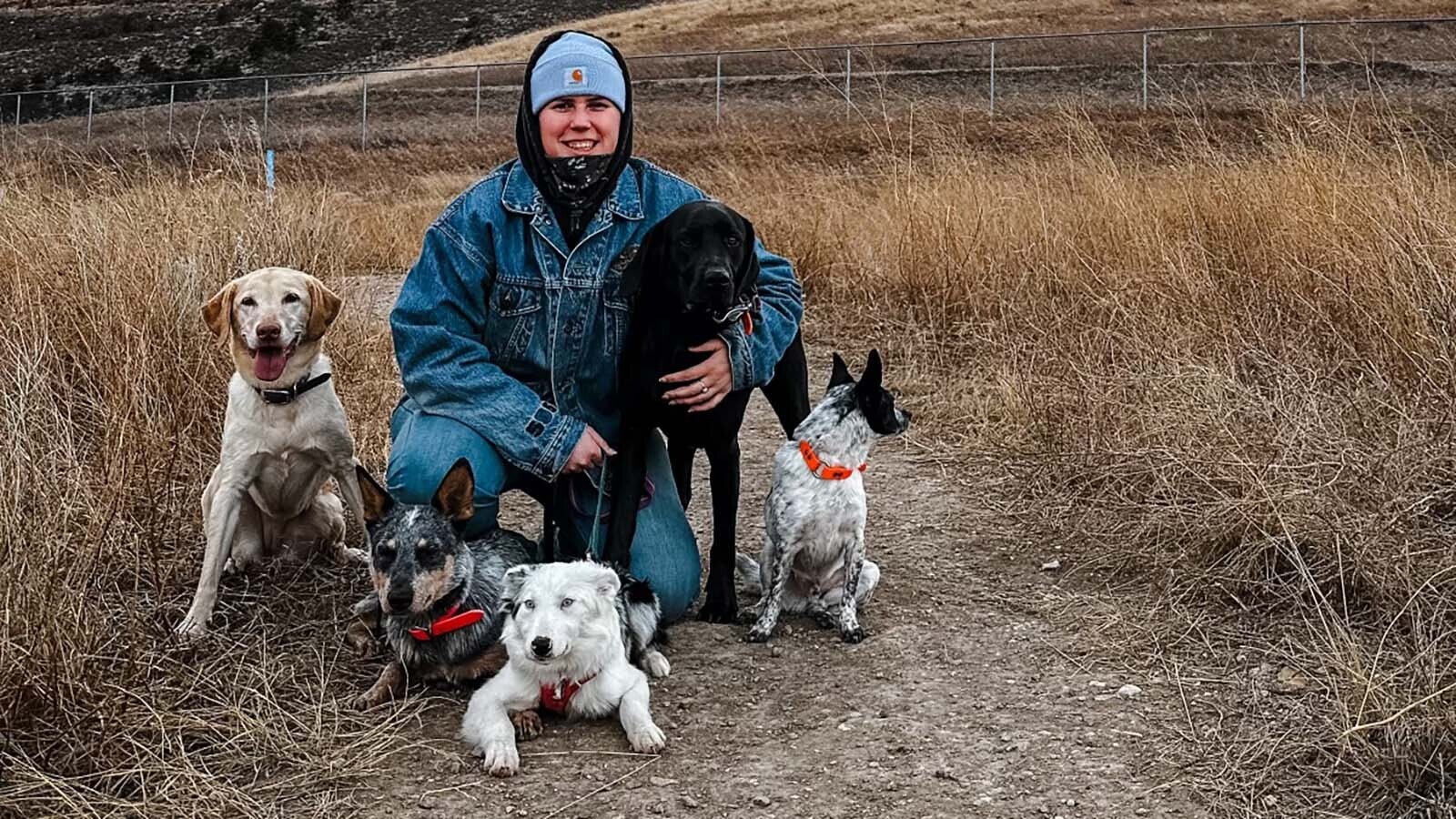A small shed and a 50-foot tower standing at the end of a 4,000-foot-long dirt runway near Medicine Bow are astonishingly intact relics from a pivotal period in American history. The SLO-32 Medicine Bow Airport might be the last and best of its kind in the United States.
That’s why Nathan Finneman, a Colorado pilot and historical aviation enthusiast, has taken to the skies and the internet with his grassroots effort to save the airport before it's lost to history. If he succeeds, it’ll give Medicine Bow a busier future by preserving an important site from its past.
“From a historical standpoint, it’s remarkable but forgotten,” he told Cowboy State Daily. “A lot of these sites are long gone, but everything in Medicine Bow is still standing. There’s something magical about this spot, and it was my calling to save it.”
Transcontinental Air Route
In the 1930s, the United States Postal Service (USPS) was at a technological crossroads. Two factions were arguing over the best way to deliver mail across the country.
“They were deciding whether train service or the new airplane transportation service was better and more efficient,” Finneman said. “So, they developed an air mail route system from the West Coast to the East Coast.”
The Woodrow Wilson Airway was the first transcontinental airmail route, stretching between New York and San Francisco, California. Airmail pilots would relay mail between planes at these airports, using the same methods (and much of the same routes) as the Pony Express.
One stretch of this state-of-the-art aeronautical navigation project was the Salt Lake to Omaha (SLO) route, which stretched across southern Wyoming. Airstrips were constructed where open cockpit planes could land, refuel and continue.
Intermediate landing fields were established every 25 miles on the SLO route, marked by a 50-foot tower with a rotating beacon at the top, powered by acetylene gas kept in a “weather house” at the tower’s base. In clear weather, the beacon could be seen up to ten miles away.
The SLO-32 Medicine Bow Airport was established in 1929 as the 32nd airstrip along the SLO route. Finneman said that between 1929 and 1935, this middle-of-nowhere airport in Wyoming “really shined” as one of the most technologically advanced stops along the route.
“There were some state-of-the-art technological developments installed at SLO-32 that most other airports didn’t have,” he said. “Things like weather reporting and navigation through radio. It became a stopping hub for a lot of pilots, especially when they were trying to get across the mountain ranges south and east of Medicine Bow.”
The USPS airmail experiment revolutionized the future of mail delivery in the United States, with 18 terminal airfields, 89 emergency airfields and more than 500 beacons.
However, the rapid advancement of airplane technology quickly made the Woodrow Wilson Airway obsolete. SLO-32 continued operating as an airmail airport until the 1950s when the federal government transferred the land and infrastructure to the state of Wyoming.
Still Standing
While many of the airstrips from Wyoming’s SLO sites still exist, that’s usually all that remains of the historic airmail airports. Their most enduring legacy on the landscape are the 70-foot concrete arrows that were the pilots’ primary means of navigation.
“Those were the literal guidance system for early pilots,” Finneman said. “They'd be flying at a certain altitude, see the cement arrow, and change the course of their aircraft to the direction that those arrows were aiming toward. That’s how they navigated back then.”
Finneman was following those arrows in his paramotor open cockpit airplane, retracing the SLO route, when he landed on the dirt runway at Medicine Bow. For a moment, he felt like he'd landed back into the 1930s.
The towers and structures built for the other SLO airports were either dismantled, destroyed or neglected to the point of collapse. Despite their age and the ferocity of Wyoming's weather, all the structures at SLO-32 were intact.
“It’s in wonderful shape for how old it is,” he said. “The tower and shed are still standing, and the beacon is still in place. The main airstrip is one of the nicer dirt strips for landings at any of these sites I've been to, even if the cross runway is full of badger and gopher holes.”
The 95-year-old buildings might look dilapidated to passersby, but Finneman knows them remarkably well preserved. Now, he’s concerned these rare relics of history might not be standing much longer.
“These structures have endured some of the worst weather conditions for 95 years,” he said. They’re all in relatively good shape – I’d give it a 5 out of 10 – but I don’t know how much longer they will be there. They need to be saved.”
Save SLO-32
Finneman’s first impressions of SLO-32 have stuck with him. He’s on a mission to do whatever it takes to preserve the historic airport, but that’s easier said than done.
The airport sits on state-owned land leased to the town of Medicine Bow. Brian Lashley, the town’s director of Public Works, has been maintaining the site as best he can.
"I would say the main frames are good, but we've got to do some repair on the roofs and maybe a side wall or two," Lashley told Cowboy State Daily. "We haven't dug into it too greatly, but by just quick observation, it looks like the main bones of it are fine. We just need to get a new roof and a door on it, fix some windows and stuff like that."
Finneman said it’s hard to find resources for any renovation, let alone the extensive work needed to ensure the tower stays standing. SLO-32 has many potential funding avenues, but none look especially promising.
“At this current moment, it's just a dirt strip with an old tower that people are trying to save," he said. "The Federal Flight Administration still lists it as an active airport, but it’s not interested in funding something like this. So, no federal funding. The State of Wyoming has the ability to fund it, but we’ve run into dead ends, and then there’s the timeframe it will take to get it.”
Lashley said the town of Medicine Bow recently elected some officers for the new airport board. They've already had a few meetings but are just getting started with exploring the possibilities for the preservation and restoration of SLO-32.
"We need more members to become officers, so we're looking for anyone that's interested to come join," he said. "Once we get some subcommittees, we'll be pressing forward."
With local, state, and federal resources unattainable or in short supply, Finneman is taking a more hands-on approach. That means SLO-32 has been and could be busier than ever.
Mugs, Hats And Fly-Ins
In his effort to save the still-standing structures at SLO-32, Finneman has started a grassroots campaign to raise funds and increase awareness of the historic airport. He sells clothing, mugs, bags, and other items on his website, Airmail Aviator, where he also posts about the airport’s history and urgent maintenance needs.
“Part of the proceeds are being put directly into a fund to fix the airport itself,” he said. “Private funding and donations can get some small but essential stuff done. Someone out there can donate a roof, paint, or a power grid.”
To increase the visibility of his efforts, Finneman organized a fly-in last year. He and a handful of other pilots flew their vintage paramotor airplanes to SLO-32 and lined up along the runway. He’s planning another fly-in for Fall 2025 and hopes to make it an annual event.
“My objective is to eventually have 50 airplanes all lined up during one of the fly-ins, with everybody camping out on the site,” he said. “It's great tourism for Medicine Bow, and you’ll have an aviation aura around the airport. There's so much history there, and I think it could kickstart a fire inside the younger generations, making them want to fly airplanes.”
Lashley supports Finneman's vision and ambition.
"I think it'd be great for Medicine Bow," he said. "People can fly in and come to the Virginian, visit our businesses and experience the town. We had eight or nine planes fly in last summer, and that was awesome."
Finneman eventually hopes to redo the interior of the weather house, stabilize the tower, and repaint the tower and cement arrow. His efforts will culminate in the restoration of the rotating beacon at the top of the tower, which has been dark for over 50 years.
“I want to see that rotating beacon spin like it did 95 years ago,” he said. “Countless friends have come out and said they spend days helping me fix it. Our biggest barrier right now is getting the funding.”
Lashley said Medicine Bow is following a promising lead that could restore power to the tower, but more work will be needed before it becomes operational.
"The beacon needs a new globe and possibly some other work," he said. "We have to get the globe and some electricity before we can test it. We're working with High Plains Power, which priced it at $2,500, but we're hoping they might love us enough to donate some of that - or all of it."
Can’t Get It Anywhere Else
Finneman has been an aviation enthusiast since childhood and has spent his career working in and around aircraft. However, he said he’s never felt and flown freer than in the skies of Wyoming.
“Wyoming has a magical experience to it,” he said. “When I fly in my open cockpit airplane, 100 feet off the ground, there isn’t a worry in the world. It still feels like the Wild West in some places, and you can't get that anywhere else.”
Flying over Wyoming and landing at SLO-32 inspired him to “hunker down and try to save this historic spot.” Medicine Bow’s airport is an important relic in American aviation history and could be the last intact Airmail airport.
"It's fantastic to know that it dates that far back, and we can preserve it," Lashley said. "We've had some people reach out, so we're gaining momentum, and we're just getting started.
The historical context and excellent preservation of SLO-32 are inspiring enough. For Finneman, saving the airport is about more than history - it's a fixture of the past that makes Wyoming wonderful today and can ensure the same for the future.
“You have a calling in life every once in a while, but this little flame continues to grow and grow,” he said. “Decades from now, some kid could land his plane here, learn about what happened at this place 150 years ago, and visit Medicine Bow. They could have the same experience I had when I first landed at SLO-32. You can’t get that anywhere else.”
Andrew Rossi can be reached at arossi@cowboystatedaily.com.
















